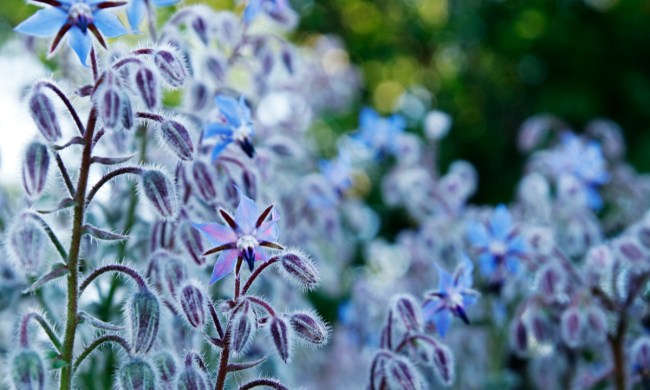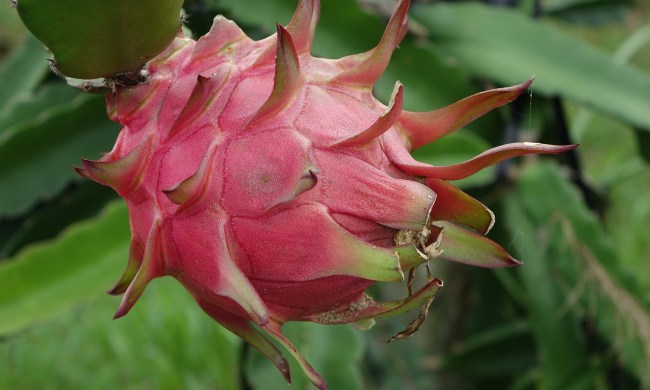What are the best plants for pots year-round? It’s easy to find bright and colorful plants during the spring and summer. But you might be wondering how to keep your landscape or patio looking pretty during those dull winter months. What plants are good for outside year-round? And what potted plants can survive winter? We’re going to answer those questions here.
1. Golden sword yucca plant
The golden sword yucca plant is an evergreen that grows throughout spring, summer, fall, and winter. It’s hardy to zones 4 and 11 and easily combines with other plants to create dramatic and stunning potted arrangements. The golden sword yucca plant grows leaves that are about 2 inches wide and shaped like swords, hence their name. The leaves feature a bright yellow stripe down the center and curly dark green edges.
This plant can reach about 3 feet tall and spread just as wide. In the summer, it produces white flowers from the center of the plant. While the plant looks great year-round, it might begin to look a little dull during the winter months, but it’ll perk up fast once spring rolls around again. Prune off the older foliage to keep this plant looking its best and put it in a spot that gets lots of sun and in a pot with plenty of drainage.
2. Green mountain boxwood
A green mountain boxwood is a hardy plant that can grow outside year-round, and it retains its pretty green color. While it typically grows around 5 feet tall, it can stay smaller when grown in a container. If you don’t like the squatty-looking shrubs, you’ll love the elegant pyramid shape of the green mountain boxwood. It’s hardy from zones 4 to 9, but you must keep it out of strong winds.
Provide the green mountain boxwood with full sun or partial shade and keep it well-watered during the hot summer months. You’ll also want to remember to rotate it regularly to prevent it from growing lopsided or becoming bald on one side. It’s a slow-growing plant, but might be the perfect option to have in a pot for that dull corner of your garden, deck, or patio.
3. Hebes
This adorable little evergreen shrub can stay outside year-round or come in during the winter. Not all varieties are frost tolerant and will need to be inside during the harsh winter months. During the spring, summer, and fall, this plant has beautiful leaves that are bright purple when juvenile, and then turn a stunning pale green as they mature. Because of this growth pattern, the plant gives a lovely ombre effect!
Hebes plants also bloom cute little flowers that come in pink, purple, or white and are perfect for pollinators. Some varieties are hardy to zone 6, but most are only OK in zones 7 to 10. You’ll want to avoid heavily pruning this potted plant, and it needs to be well-watered during the summer.
It’s a pretty compact plant, only growing about 3 feet tall and wide, but the size is perfect for pots. Hebes plants like full or partial sun and well-draining sandy soil and they are pretty drought tolerant. During the winter, be aware of where the winds are coming. A wind that’s too harsh will dry out the plant, and it might not survive.
4. Skimmia japonica
The skimmia japonica is the perfect plant to add to your garden of pots if you want to include some color that will last year-round. This evergreen shrub provides the garden with attractive colors starting during the fall. The skimmia japonica starts getting its color in the fall when it produces bright red buds.
When most plants are at their dullest, the skimmia japonica shines bright. It then begins to flower in the spring, so you have that beautiful bright red color during the fall, winter, and spring. And when those pretty buds and flowers aren’t around, it still has lovely green leaves. It thrives in full or partial shade and can survive temperatures down to 5 degrees Fahrenheit, so it’s hardy in zones 6 through 9. It grows 3 to 4 feet tall and needs moist but well-draining soil.
5. Erica carnea
This sun-loving evergreen is low maintenance and brings a splash of color to your home during the cold winter season. The Erica carnea is a winter-hardy plant that produces a plethora of pink and purple flowers in the colder months! The tiny, cone-shaped flowers have pink bottoms and dark purple tips. They cover the plant and almost hide the needle-like foliage so you can barely see it.
Plant the Erica carnea in a pot and put it on display in a sunny spot and in some well-draining soil. It’s hardy in zones 5 to 7 and can grow up to 1 foot tall and 2 feet wide. Other than ensuring the plant has enough water, this plant is fine with being a little neglected, which is perfect for those of us with busy schedules.
There are also a lot of herbs that can grow in containers and provide color throughout the year. But these are some of our favorite colorful plants that grow well in pots and can survive cold winter conditions. You could pick up one or all these plants and create a lovely winter garden!




